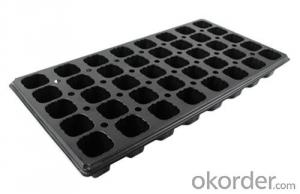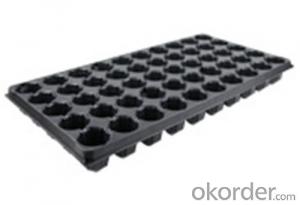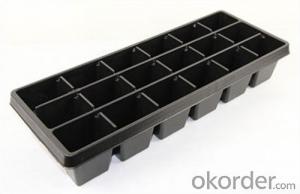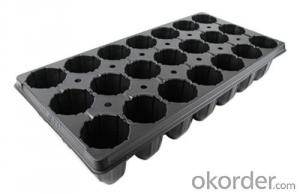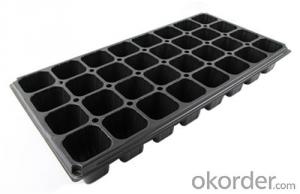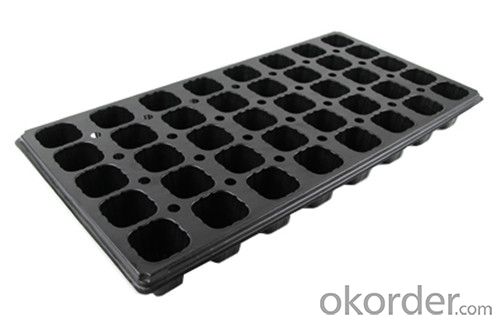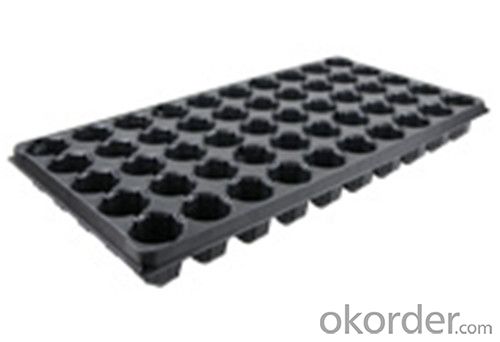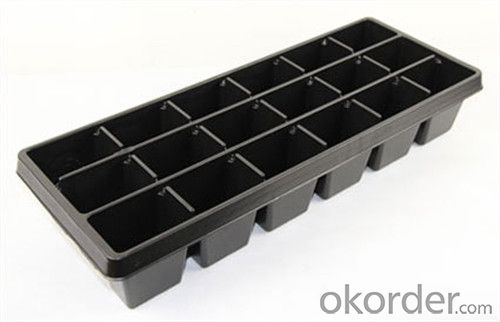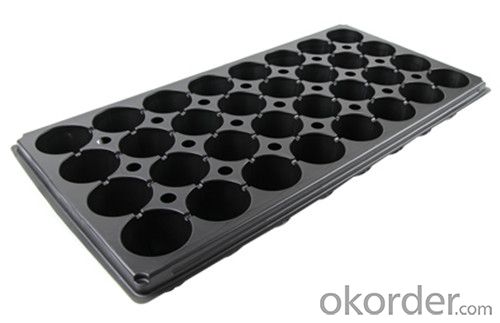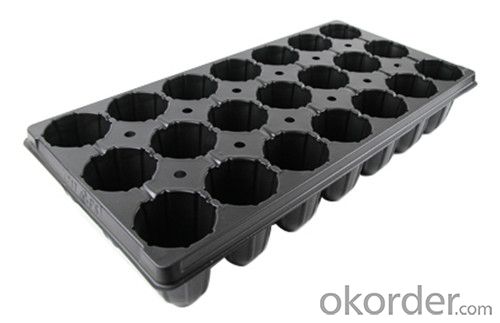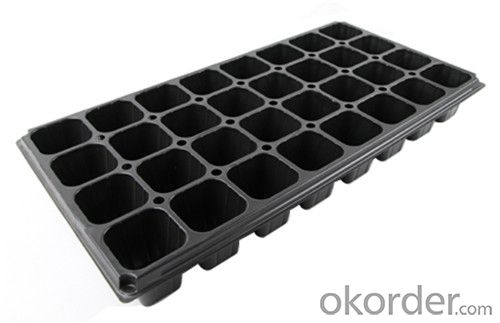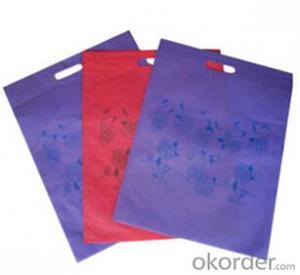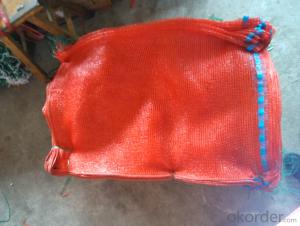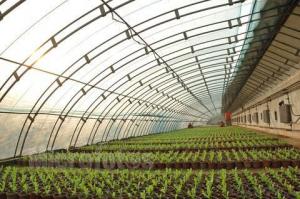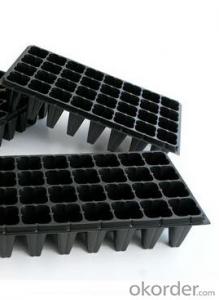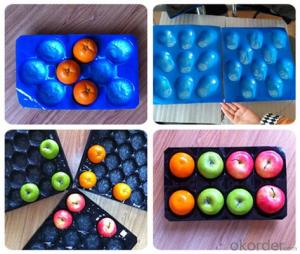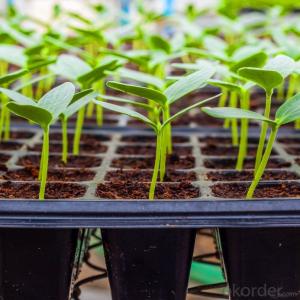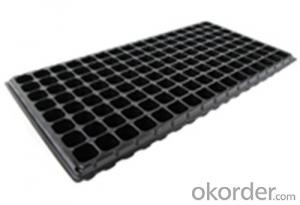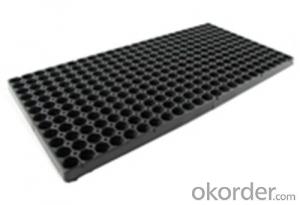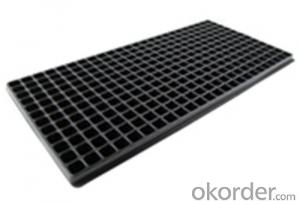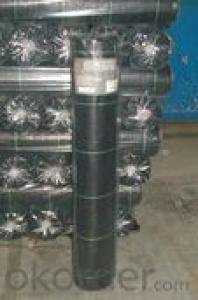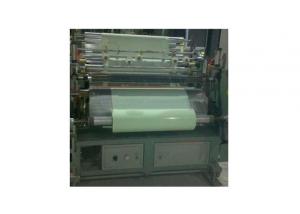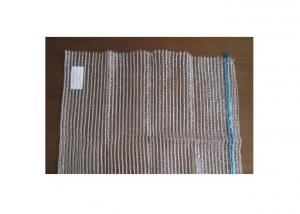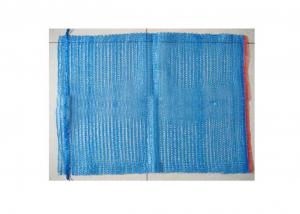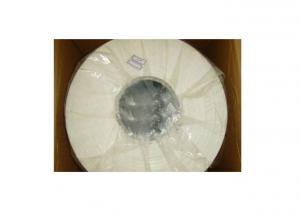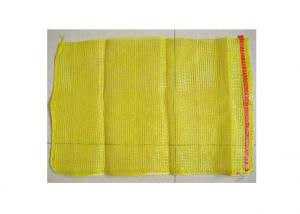Plastic Seed Tray Plug Tray for Green House Nursery Plug Tray
- Loading Port:
- China main port
- Payment Terms:
- TT OR LC
- Min Order Qty:
- 1000 pc
- Supply Capability:
- 100000 pc/month
OKorder Service Pledge
OKorder Financial Service
You Might Also Like
Structure of the seed tray:
Top quality and competitive price.
Variety design and good appearance.
Easy to use, and remove.
Durable and reusable.
Eco-Friendly.
Description Main Features of the seed tray:
Ideal for Starting seeds and Transplanting Seedling.
Suitable for both manual and automatic planting.
Suitable for Propagating Vegetables, Flowers and other plant from seed in green-house or indoors.
Seed Tray Images:
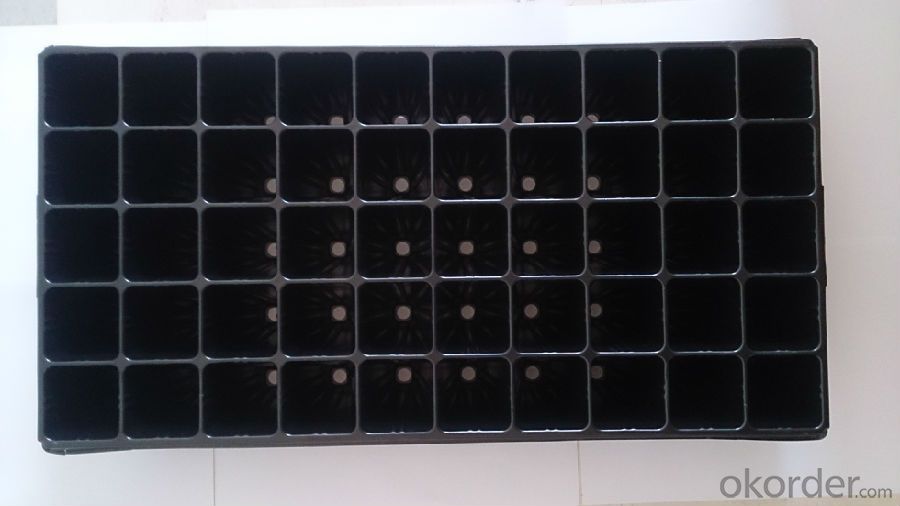
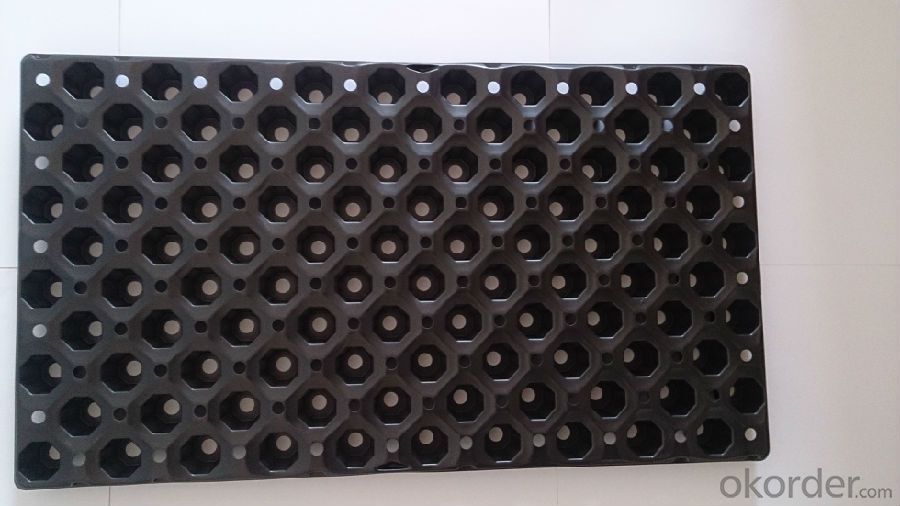
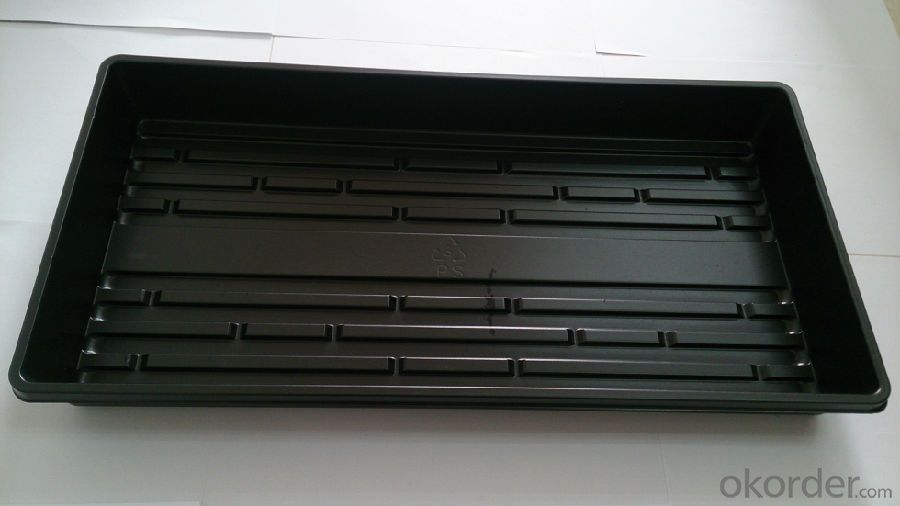
Seed Tray Specification:
Material: HIPS/PVC
Thickness: 0.5mm-1.5mm, Standard:1mm
Weight: 80g(±5)g-230g(±5)g, Standard weight:155g(±5)g
Size: length:490mm-540mm, width:190mm-345mm,depth:25mm-150mm
Standard:54mmX28mm
Cell count: 18-512
Package: carton
Using time: 8-10 times
FAQ:
Q:How Can I Get A Sample?
A:You can get samples by communicate with our export sales.
Q:How Long Is Delivery?
A:Delivery time will be 7-25 days according to order quantity.
Q:What Is The MOQ?
A:Our MOQ is 1*20FT container quantity, allow to mix several items.
Q:What Is Our Normal Payments Terms?
A:Our normal payment terms now is T/T, L/C or Western Union,Papal.
Q:How Do I Order Your Products?
A:You can check our website for any items you interest and you can also get communication with our export sales and order for it accordingly.
Q:What Kinds Of Material We Use In Our Product?
A:Our plastic flower pots use material such as PP polymer or PE polymer.
Thickness vs. Weight
Thickness of trays are from 0.5mm to 1.0mm.
1.0mm: 155g±5g; 100pcs/ctn.
0.9mm: 140g±5g; 120pcs/ctn.
0.7mm: 110g±5g; 150pcs/ctn.
0.6mm: 95g±5g; 180pcs/ctn.
0.5mm: 80g±5g; 200pcs/ctn.
Using time:
thickness of 0.5mm can be used 1 to 2 times.
thickness of 0.6mm can be used 3 to 4 times.
thickness of 0.7mm can be used 5 to 6 times.
thickness of 0.8mm can be used 7 to 8 times.
thickness of 0.9mm can be used 8 to 9 times.
thickness of 1.0mm can be used 8 to 10 times.
- Q: We have to use a theory for science whether plastic, card or paper makes a better sail. Please give me your opinion. Thanks heaps!
- Since a sail acts like a wing at at least some angles to the wind any material ridgid or flexible can act as a sail as long as it can maintain its shape. At other sailing angles it acts as an impeller and this requires a different shape to be efficient. Since the sail serves different functions at different wind angles it is probably best to use a flexible material that can be modified on the fly ie cloth sails. Paper would seem to be the closest to sail cloth with the provission of it not getting wet of course!
- Q: What are the best ground cover plants for attracting hummingbirds?
- Some of the best ground cover plants for attracting hummingbirds include creeping phlox, creeping thyme, bee balm, and coral bells. These plants produce vibrant flowers that are rich in nectar, which is a favorite food source for hummingbirds. Additionally, their low-growing nature provides ideal shelter and perching spots for these beautiful birds.
- Q: Are there any ground cover plants that are suitable for high-altitude gardens?
- Yes, there are several ground cover plants that are suitable for high-altitude gardens. Some examples include Alpine aster, creeping phlox, snow-in-summer, and alpine strawberries. These plants are adapted to colder temperatures and can thrive in high-altitude environments.
- Q: Are nursery trays suitable for starting plants for reforestation projects?
- Yes, nursery trays are suitable for starting plants for reforestation projects. These trays provide a controlled environment for seedlings to germinate and develop roots before they are transplanted into the reforestation site. The trays also allow for easy transportation and handling of seedlings, making them a practical choice for large-scale reforestation efforts.
- Q: Are agricultural plastic products resistant to insect damage?
- Yes, agricultural plastic products are generally resistant to insect damage. The plastic materials used in these products are designed to be durable and have low susceptibility to insect infestations. However, it's important to note that some insects may still cause minor damage or create entry points for other pests if proper precautions are not taken.
- Q: How do agricultural plastic products help with fruit ripening?
- Agricultural plastic products, such as mulch films or greenhouse covers, help with fruit ripening by creating a controlled environment that promotes optimal growing conditions. These plastics can regulate temperature, humidity, and light exposure, allowing fruits to ripen more evenly and efficiently. Additionally, they provide protection against pests and diseases, ensuring healthier crops and better quality fruits.
- Q: Can nursery trays be used for medicinal plants?
- Yes, nursery trays can be used for growing medicinal plants. Nursery trays provide a suitable environment for germination and early growth of various plant species, including medicinal plants. The trays offer proper drainage, allow for easy transplanting, and help maintain uniform growing conditions, making them an effective option for cultivating medicinal plants in a controlled setting.
- Q: What are the advantages of using plastic windbreak nets in agriculture?
- Plastic windbreak nets offer several advantages in agriculture. Firstly, they provide effective protection against strong winds, reducing wind speed and turbulence, which in turn minimizes crop damage and loss. Secondly, these nets create a microclimate by blocking excessive sunlight, reducing evaporation, and preventing soil erosion. This promotes optimal growing conditions and helps retain moisture, especially in arid or windy regions. Additionally, plastic windbreak nets act as a barrier against pests and insects, contributing to improved crop health and yield. Lastly, they are durable, cost-effective, and easy to install, making them a practical choice for farmers seeking reliable wind protection and increased agricultural productivity.
- Q: What are the different types of mulch films used in agriculture?
- There are several types of mulch films used in agriculture, including black plastic mulch, clear plastic mulch, silver reflective mulch, and biodegradable mulch. Each type of film serves a specific purpose and provides various benefits for crop growth and development.
- Q: How does agricultural plastic affect crop pollination?
- Agricultural plastic can have both positive and negative effects on crop pollination. On one hand, plastic mulches can help conserve soil moisture, control weed growth, and increase crop yields, thus indirectly benefiting pollinators by providing them with more abundant and higher quality food resources. On the other hand, excessive use and improper disposal of plastic materials can harm pollinators by disrupting their foraging and nesting habitats, causing entanglement or ingestion issues, and contributing to environmental pollution. Therefore, careful management and responsible use of agricultural plastics are crucial to minimize negative impacts on crop pollination and support the overall health of pollinator populations.
Send your message to us
Plastic Seed Tray Plug Tray for Green House Nursery Plug Tray
- Loading Port:
- China main port
- Payment Terms:
- TT OR LC
- Min Order Qty:
- 1000 pc
- Supply Capability:
- 100000 pc/month
OKorder Service Pledge
OKorder Financial Service
Similar products
Hot products
Hot Searches
Related keywords
